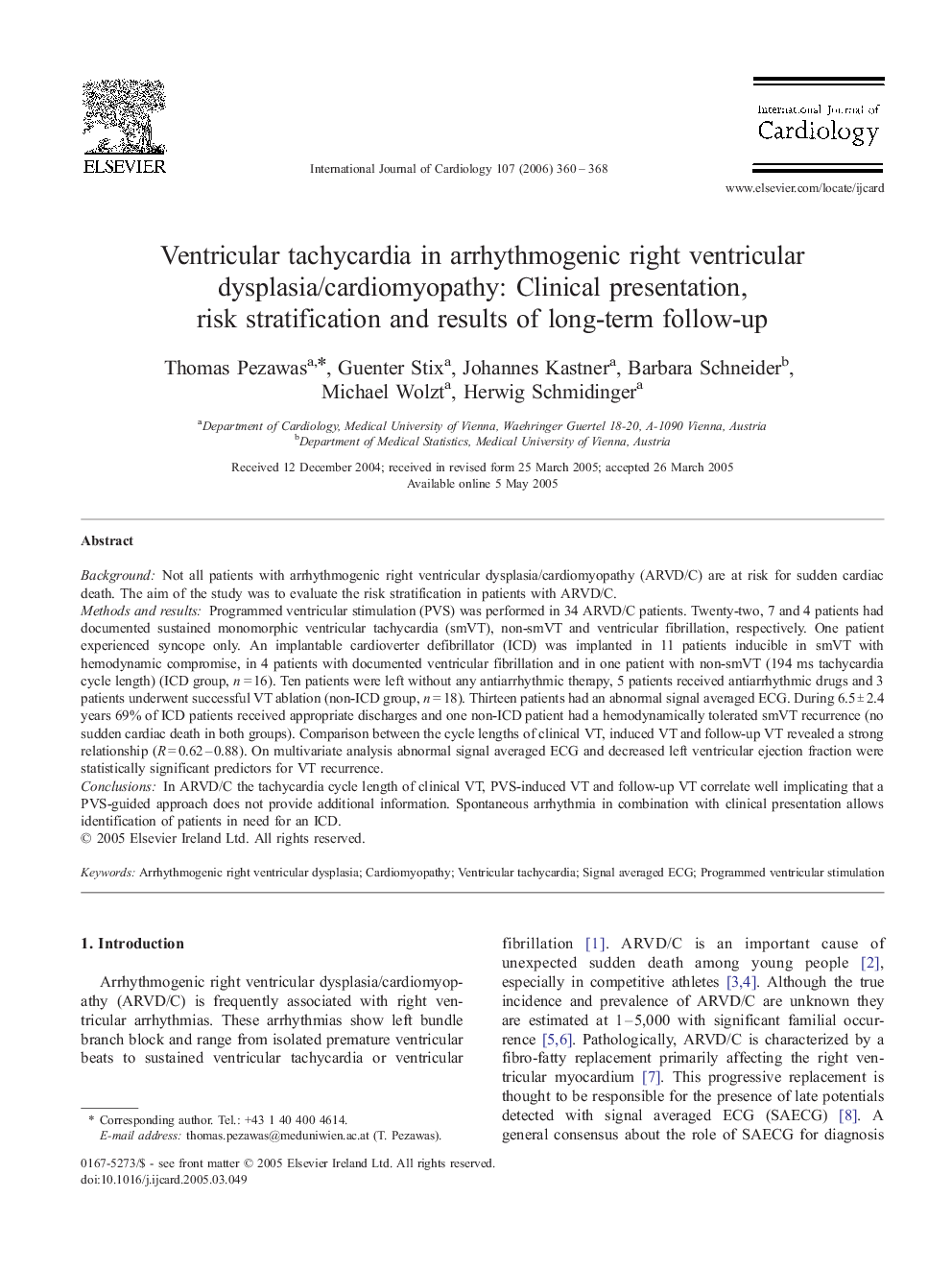| Article ID | Journal | Published Year | Pages | File Type |
|---|---|---|---|---|
| 2936167 | International Journal of Cardiology | 2006 | 9 Pages |
BackgroundNot all patients with arrhythmogenic right ventricular dysplasia/cardiomyopathy (ARVD/C) are at risk for sudden cardiac death. The aim of the study was to evaluate the risk stratification in patients with ARVD/C.Methods and resultsProgrammed ventricular stimulation (PVS) was performed in 34 ARVD/C patients. Twenty-two, 7 and 4 patients had documented sustained monomorphic ventricular tachycardia (smVT), non-smVT and ventricular fibrillation, respectively. One patient experienced syncope only. An implantable cardioverter defibrillator (ICD) was implanted in 11 patients inducible in smVT with hemodynamic compromise, in 4 patients with documented ventricular fibrillation and in one patient with non-smVT (194 ms tachycardia cycle length) (ICD group, n = 16). Ten patients were left without any antiarrhythmic therapy, 5 patients received antiarrhythmic drugs and 3 patients underwent successful VT ablation (non-ICD group, n = 18). Thirteen patients had an abnormal signal averaged ECG. During 6.5 ± 2.4 years 69% of ICD patients received appropriate discharges and one non-ICD patient had a hemodynamically tolerated smVT recurrence (no sudden cardiac death in both groups). Comparison between the cycle lengths of clinical VT, induced VT and follow-up VT revealed a strong relationship (R = 0.62–0.88). On multivariate analysis abnormal signal averaged ECG and decreased left ventricular ejection fraction were statistically significant predictors for VT recurrence.ConclusionsIn ARVD/C the tachycardia cycle length of clinical VT, PVS-induced VT and follow-up VT correlate well implicating that a PVS-guided approach does not provide additional information. Spontaneous arrhythmia in combination with clinical presentation allows identification of patients in need for an ICD.
